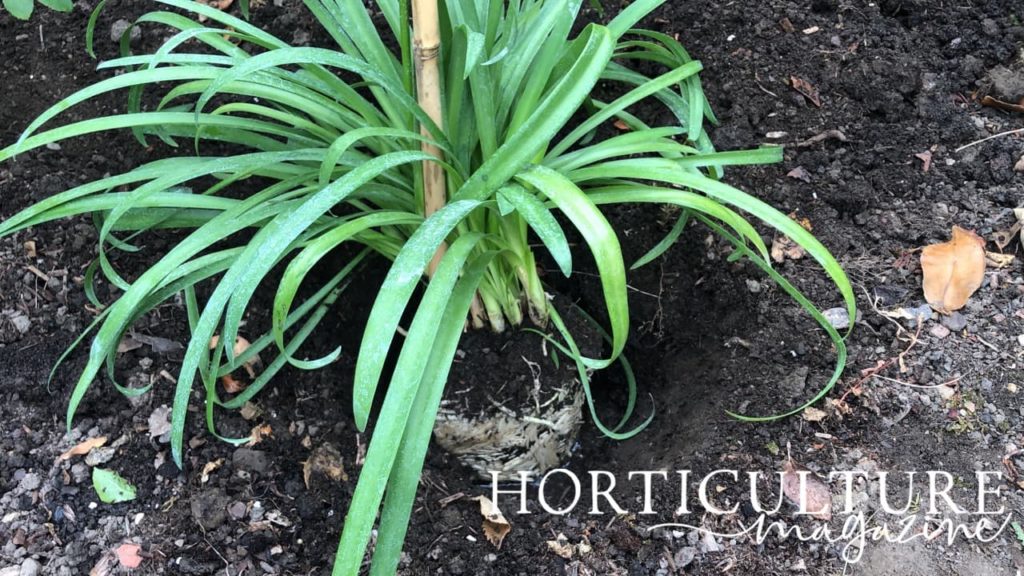PERENNIALS > AGAPANTHUS
Reviewed By DAN ORI

Dan has over 27 years’ under his belt caring for plants and gardens. Working as a Horticultural Instructor and Consultant, he draws on a diverse range of experience that includes working as a Head Gardener, Tree Surgeon, Garden Centre Trouble Shooter, and writer of academic papers. Dan has a Level 3 Diploma in Horticulture and is currently a candidate for the RHS’s most prestigious award – The Master of Horticulture.
Contributions From PATRICK FAIRWEATHER

Patrick is the MD of Fairweather’s Nursery, which is home to a Plant Heritage National Collection of Agapanthus. Their Allium cultivar won the HTA Plant Of The Year Award in 2021 and came 2nd in the same category at the Chelsea Flower Show in the same year. Patrick is also the Chair of the RHS Agapanthus AGM trials.

Emily is a Gardening Writer, Photographer and Videographer from Derbyshire, UK. She is the Founder of Emily's Green Diary - a community of more than 75,000 people who share in her gardening journey.
Agapanthus, or ‘African Lily’, is a popular border and container plant, known for its tall stems ending in spherical flower heads in shades of blue, white and purple, which bloom from mid-summer until early autumn.
The Agapanthus plant originates from Southern Africa, and therefore typically prefers a hot and sunny climate.
Despite this, it is possible to grow it successfully in many UK gardens, providing you choose the right location, and offer your plants adequate winter protection.
For this guide, we interviewed specialist Agapanthus grower Patrick Fairweather. He is the MD of Fairweather’s Nursery, home to a Plant Heritage National Collection of Agapanthus – as well as being Chair of the RHS Agapanthus AGM trials.
“Agapanthus reminds me of sunny summer days,” Patrick says.
“They used to be just blue and white, but now, with modern breeding, we have a wide range of colours, flowering times and habits.”
If you’re prepared to put the effort in, you’ll be rewarded with spectacular displays of exotic-looking blue, purple or white flowers, at an eye-catching height.
Some varieties are also evergreen, so will provide attractive green foliage year-round (if not covered for winter).
Overview
| Botanical Name | Agapanthus |
| Common Name(s) | African Lily, Lily Of The Nile |
| Plant Type | Perennial Flower |
| Native Area | South Africa |
| Hardiness Rating | Typically H5 |
| Foliage | Sometimes evergreen, narrow, strap-shaped leaves |
| Flowers | Umbels of funnel-shaped blue or white flowers |
| When To Sow | April, May |
| Flowering Months | June, July, August, September |
Sunlight
Preferred
Full Sun
Exposure
Sheltered
Size
Height
0.5 – 1M
Spread
0.1 – 0.5M
Bloom Time
June – September
Soil
Preferred
Most Soil Types
Moisture
Moist but well drained
pH
Any
Agapanthus is a herbaceous perennial, and part of the Amaryllidaceae family.1Amaryllidaceae. (n.d.). Pacific Bulb Society. Retrieved March 9, 2023, from https://www.pacificbulbsociety.org/pbswiki/index.php/Amaryllidaceae
There are hundreds of cultivars and hybrids within the genus, ranging from 20cm dwarf varieties to ones that grow to 1.5m tall.
Although it originates from Southern Africa, Agapanthus has become naturalised in various other countries, including Britain and Australia.2Agapanthus. (n.d.). Kew Royal Botanic Gardens. Retrieved March 9, 2023, from https://powo.science.kew.org/taxon/urn:lsid:ipni.org:names:331131-2

The flowers of Agapanthus plants are most often shades of blue, but can also be lavender, purple or white.
They are trumpet-shaped, and form in large spheres at the ends of tall stems, above the green foliage.
The flower heads will prove an instant hit with birds and butterflies into your garden.
Other names commonly used for Agapanthus include ‘African Lily’ and ‘Lily of the Nile’ – despite the fact that it’s not actually a lily.
Habitat & Growing Conditions

Agapanthus’ natural habitat is Southern Africa, where it grows in hot and sunny conditions, with fertile soils.
“Agapanthus love full sun and free draining soil that mirror the plant’s native conditions,” says Patrick.
Many varieties therefore do not cope well in the cold, and need to be sheltered during winter.

Due to its dry natural habitat, Agapanthus can tolerate periods of drought – although you should not allow it to dry out completely.
Deciduous vs Evergreen
Agapanthus plants can be deciduous or evergreen – the deciduous varieties tend to be hardier, whereas the evergreens are more tender.
It is recommended to cover evergreens in winter, or grow them in a container, so that you can bring them into a cool greenhouse to protect them from frost.
Planting Agapanthus

The best time to plant Agapanthus is in spring, around April time.
Try to wait until the last winter frosts have passed – this is especially true for the less hardy, evergreen varieties.

Make sure to cover the roots with at least 5cm of soil upon planting.

If you want to make life easier for yourself, you can also buy potted Agapanthus plants in summer, from garden centres or specialist growers.

Keep them well-watered and mulched, to allow the plants to establish themselves.
Agapanthus Care
When growing Agapanthus, it is important to choose a variety to suit your situation.
Providing your garden is sheltered, and you don’t live in too cold an area, you should be able to grow a hardy, deciduous variety in your garden, without moving or covering it during winter.
Fully hardy varieties of Agapanthus include A. ‘Midnight Blue’ and A. ‘Blue Giant’.

If you don’t have a sheltered garden, or you wish to grow an evergreen variety, your plant will probably need to be moved into a cool greenhouse or sheltered location over winter.
It is therefore a good idea to grow less hardy varieties of Agapanthus in containers in the UK.
Aspect

Agapanthus prefers full sun, so choose a sunny, south-facing spot in your garden in which to plant it or position the container.
Soil & Watering

Plant in a loam-based compost, and make sure the pot has good drainage, as the plant does not like waterlogged soil.
Water the plant regularly during the growing season of the first year – Agapanthus blooms from mid-summer until early autumn, depending on the variety.
Once the plant is established, it should only need watering in the case of a particularly hot or dry summer.
Fertilising

If you’re growing your Agapanthus in a garden border, you can feed it a balanced fertiliser once a year in spring, to encourage blooming.
“If your Agapanthus lacks flowers, a high-potash feed should help,” Patrick suggests.
If your plant is in a container, feed it a liquid fertiliser every 2 weeks from April to July.
FAQs
When Do Agapanthus Flower?
Agapanthus plants have a relatively long flowering period, which stretches from mid-summer until early autumn.

The exact month they begin flowering could be June, July or August, depending on the variety, and the growing conditions.
Are Agapanthus Hardy Plants?
How hardy your Agapanthus plant is will depend on which variety you are growing.
Generally speaking, deciduous varieties of Agapanthus are hardier than evergreen varieties.

Once established, there are some deciduous varieties which require very little ongoing care, and can tolerate cold temperatures down to -5°C, or even -10°C.
In contrast, evergreen varieties will need to be mulched, covered or moved inside during winter, to protect them from frosts.
What Colours Does Agapanthus Come In?
Agapanthus flowers come in all shades of blue, purple and white, ranging from sapphire and indigo to pastel blue, lavender, pink and cream.
The plants have strappy green foliage, and stiff, upright stems.

You can encourage your plants to produce high-quality, colourful blooms by watering well in autumn and spring and feeding with a high-potassium fertiliser.
Make sure they have enough access to sunlight and provide them with shelter over winter.
References
- 1Amaryllidaceae. (n.d.). Pacific Bulb Society. Retrieved March 9, 2023, from https://www.pacificbulbsociety.org/pbswiki/index.php/Amaryllidaceae
- 2Agapanthus. (n.d.). Kew Royal Botanic Gardens. Retrieved March 9, 2023, from https://powo.science.kew.org/taxon/urn:lsid:ipni.org:names:331131-2


